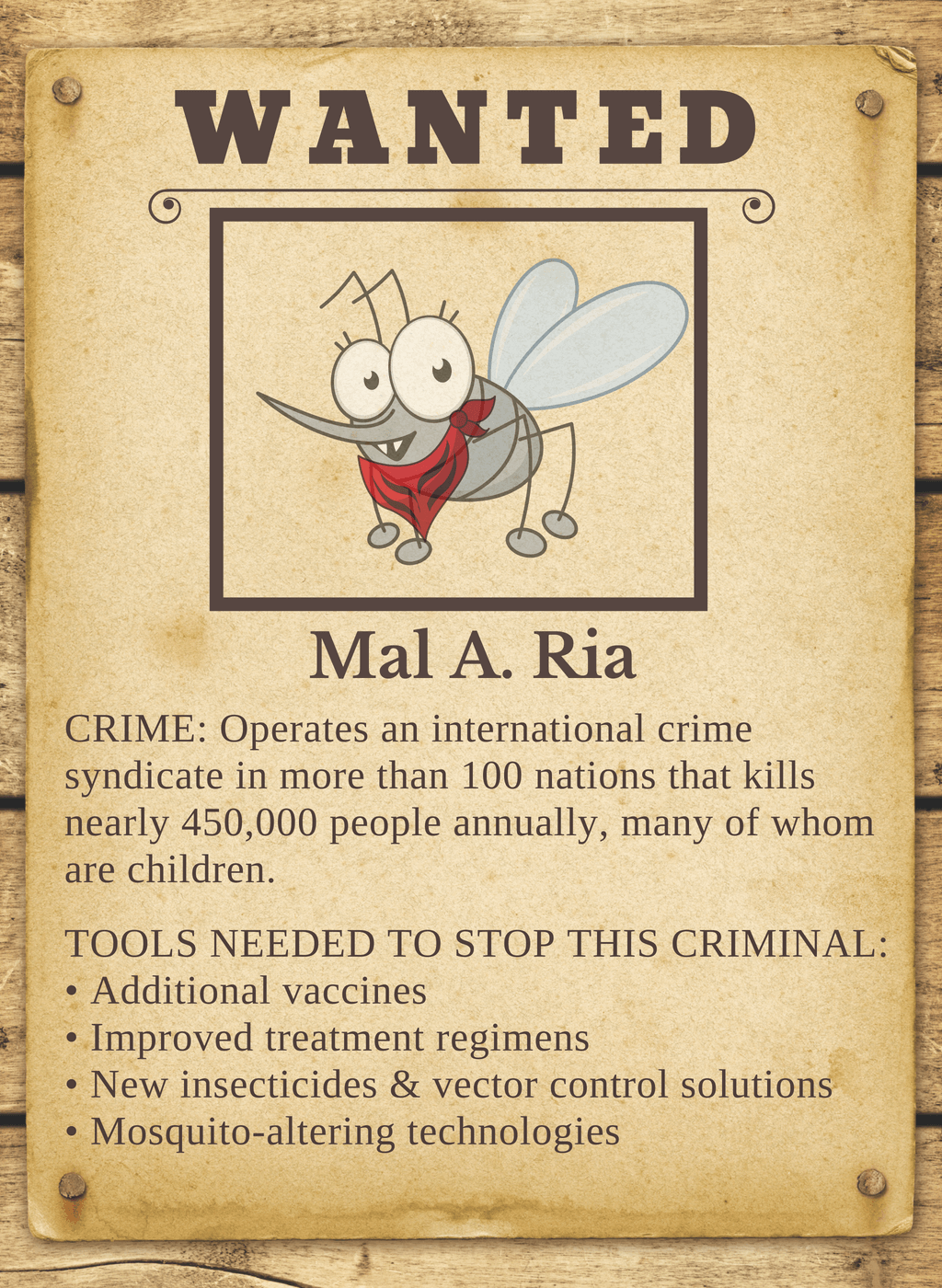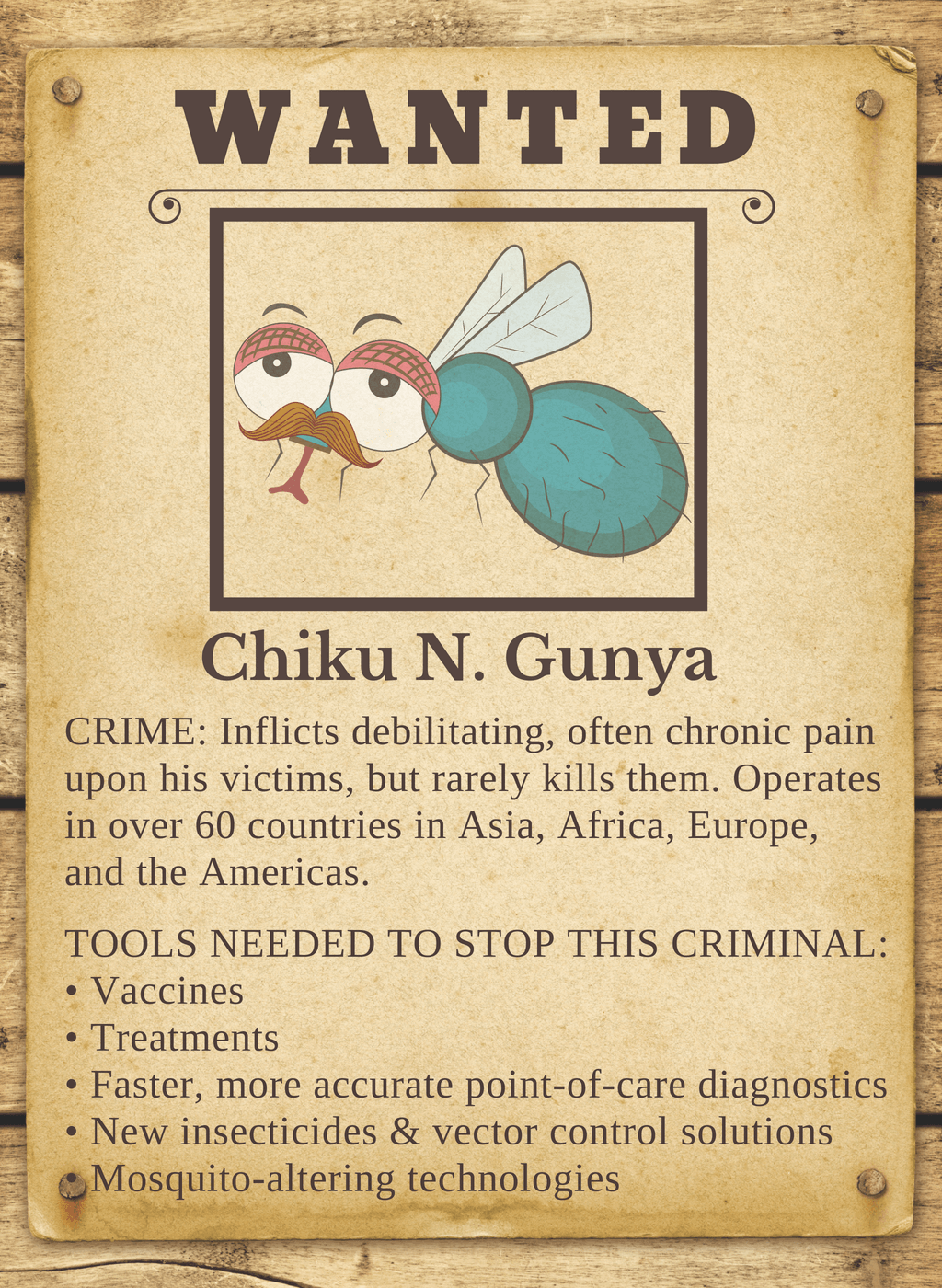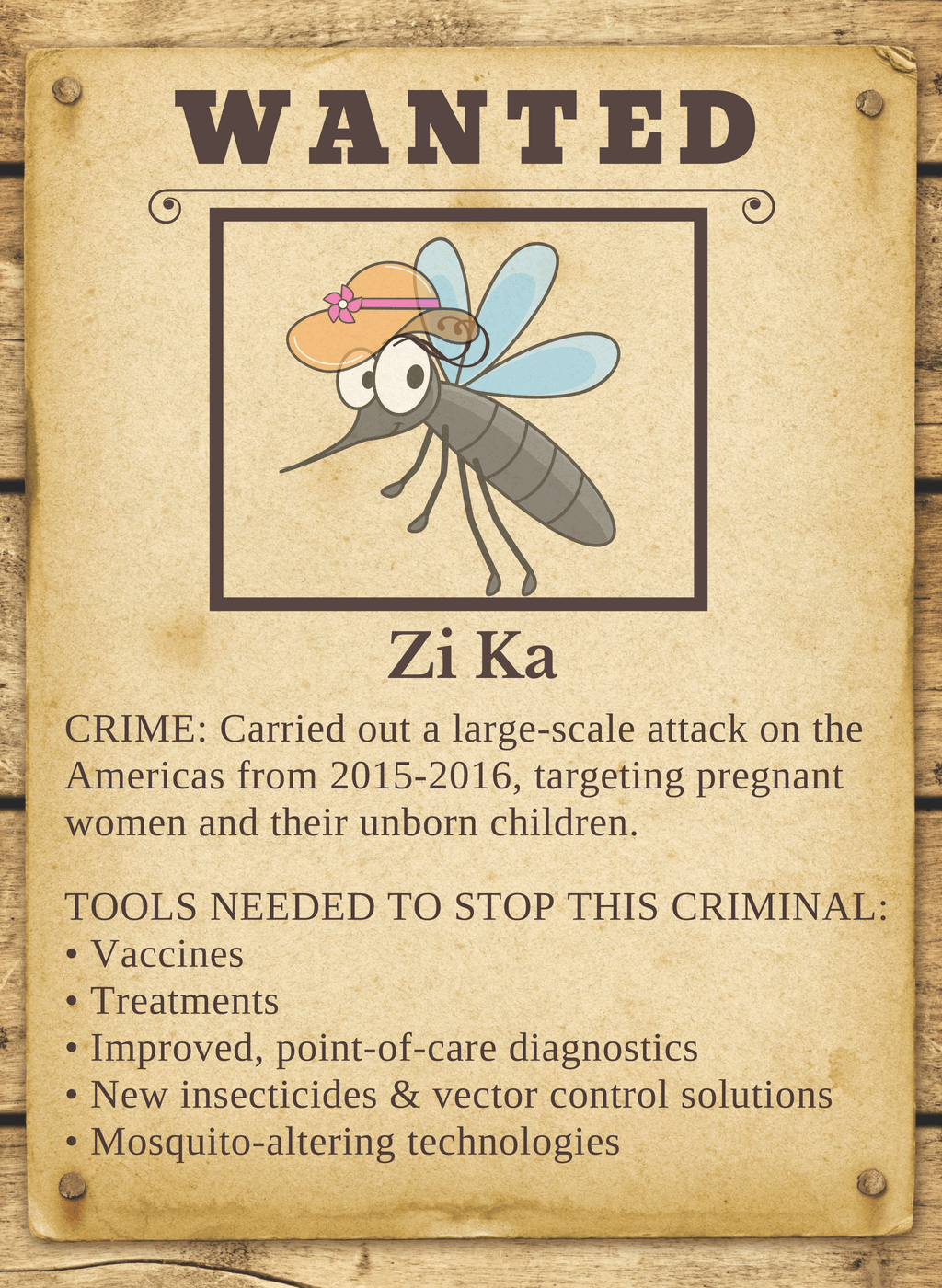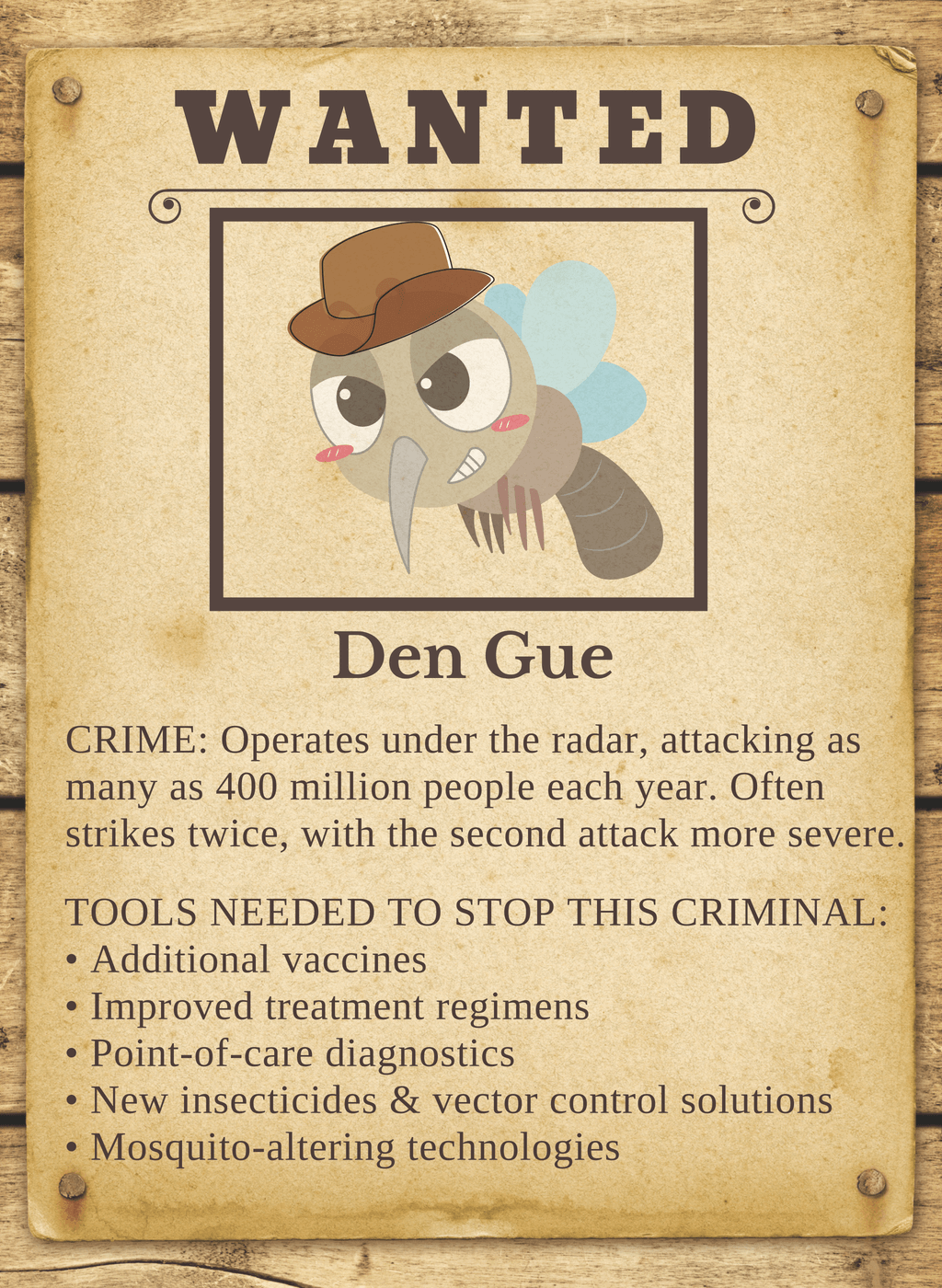Mosquitoes: This pervasive posse of pests and the deadly diseases they carry have terrorized towns and sickened citizens for far too long.
For decades, a fearless force of heroic health workers has fought to keep these bloodthirsty bugs at bay, but to finally put an end to these murderous
mozzies and the dastardly diseases they distribute, they need new tools, including vaccines, drugs, diagnostics and vector-control products.
For World Mosquito Day, GHTC is taking a moment to shine a spotlight on the ghastly gang of mosquito-borne diseases and the innovations we need to finish
these frightening foes for good.
Malaria

Mal A. Ria is old, cruel, and has killed more people than all of humanity’s wars combined. Since the 1950s, countries have fought a sustained war against
this nefarious nemesis. Increased global action led to the development and introduction of cheaper drugs, rapid diagnostics, and child-friendly medicines, as well as mass distribution of insecticide-treated bednets, which help drive Mal A. Ria from several
countries where she formally had a foothold and weakened her forces. Yet, today progress has stalled and Mal A. Ria is fighting back hard, having developed
resistance against commonly used insecticides and treatments
Dengue
Also known by the aliases “Breakbone Fever” and “Dandy Fever,” Den Gue has largely operated under the radar as a member of the Neglected Tropical Disease
crime syndicate, attacking as many as 400 million people annually. Den Gue often induces a painful fever, and his attacks can leave victims with long-term
neurological and liver problems, or in some cases kill them. He typically attacks during the day, rendering bednets a less effective tool to fight
him.
Chikungunya

While he may be a lesser-known member of the Neglected Tropical Disease crime syndicate, Chiku N. Gunya is still a dangerous adversary reaching over 60
countries in Asia, Africa, Europe, and the Americas. An attack by Chiku N. Gunya can leave victims with debilitating joint pain that can sometime persist
long after the attack. Unfortunately, health workers have few tools at their disposable to reign in his criminal activity: There is no vaccine, specific
treatment, or cure, and current diagnostic tools are challenging to employ in remote regions.
Researchers are working feverishly to deliver new tools to fight this foe. Several promising vaccine candidates are now undergoing testing in human clinical trials and researchers are exploring whether currently available antivirals could be repurposed to combat Chiku N. Gunya, as well as developing new antivirals treatments.
Zika

While Zi Ka has been operating since at least the 1940s in certain places in Africa and Asia, her crimes did not capture widespread public attention until
she carried out a large-scale attack on the Americas from 2015-2016, leading the World Health Organization to declare a public health emergency. Her
crimes are particularly cruel, as the victims she targets are pregnant women, resulting in severe birth defects in some children.
When Zi Ka captured her spot on the most wanted list in 2015, health workers had few tools to stop her reign of terror and that remains the case. There
is no vaccine, specific treatment, or cure, and diagnostic tests have trouble distinguishing her attacks from that of Den Gue or other mosquito-borne
disease miscreants. Scientists are working to ensure the world is better prepared if she decides to undertake another major attack. While it could
be many years until they are available, several vaccine candidates are currently under development, and experimental diagnostic tests have been made available on an emergency basis as researchers continue to test and refine these tools.
R&D: The key to ending these enemies
While our heroic health workers have made strides in stifling these diabolical diseases and protecting the populace, these cronies still cause considerable
calamity in communities worldwide. Our call to action should be clear: We need research and development (R&D) and new technologies to exact an
end to these enemies for good.




